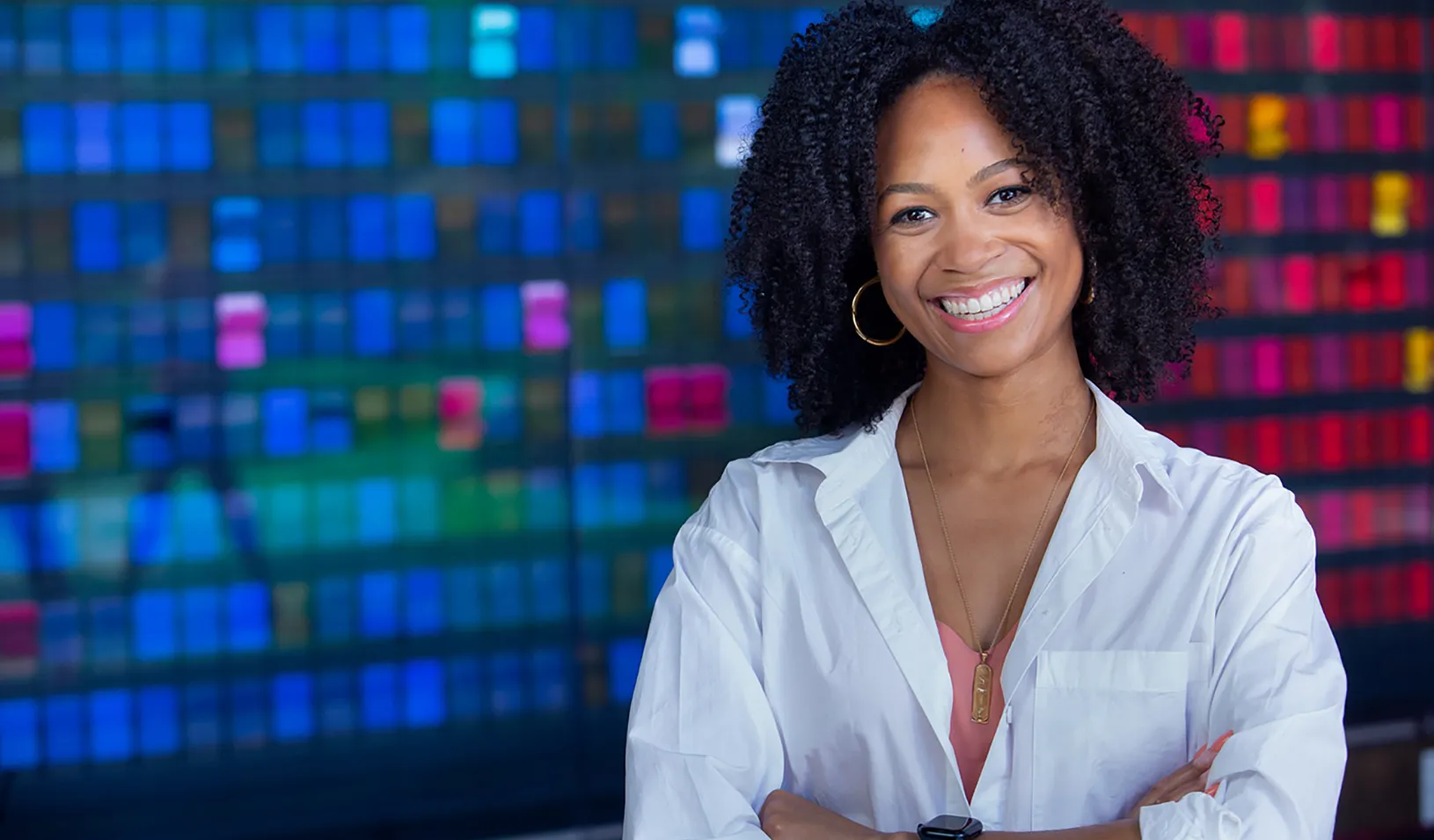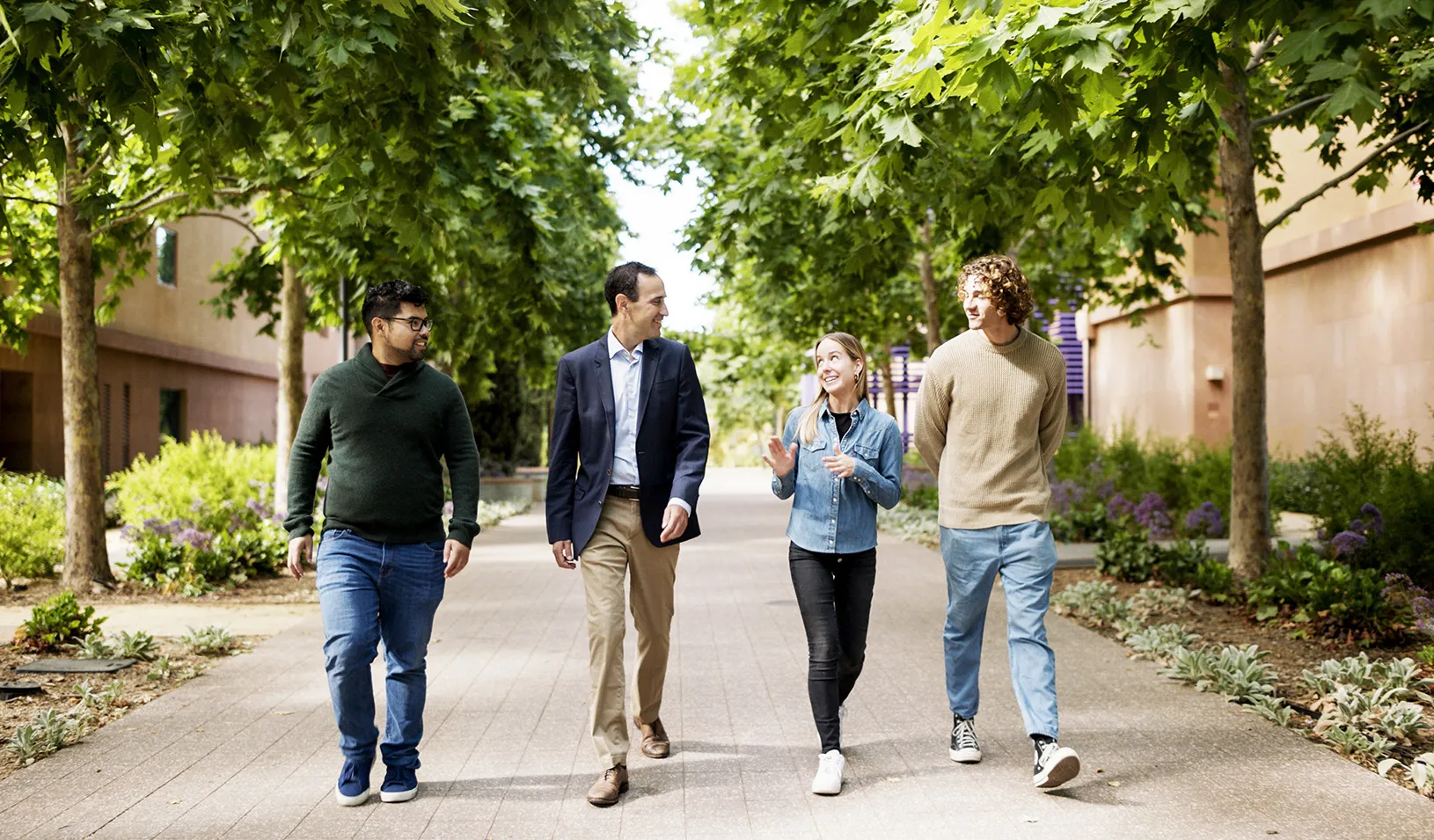Six Ways Stanford GSB’s MSx Program Has Changed in 60 Years
The Sloan — now Stanford MSx — Program has evolved in many ways in the last six decades. Here are six of the most significant changes.
November 15, 2018

The first Sloan Fellows in 1958 were all American men. Today, about 25% of the class is women and half come from countries outside the U.S. | Elena Zhukova
1. Renamed, Reenvisioned
What is now called the Stanford MSx Program graduated its first class in 1958 from what was then called the Stanford Program in Executive Management. In 1960, in honor of the lead donor, the Alfred P. Sloan Foundation, the program’s name was changed to the Stanford Sloan Program. That name lasted five decades and defined a unique community and experience.
The program is now officially known as the Stanford MSx Program: Master of Science in Management for Experienced Leaders.
“The MSx name is unconventional,” says Mike Hochleutner, who has directed the program since 2012. “We felt it would be clear it was a degree program and unique to Stanford.”
Former Stanford GSB Dean Garth Saloner commissioned an assessment of the Sloan Program shortly after he began his tenure. The original vision for the fellowship that connected future corporate leaders with future professors had shifted decades earlier, and the landscape of business education was changing significantly.

Photo by Anne Knudsen
Scott J. Brady, MS ’00, was part of the committee that evaluated the program and proposed ideas for the future. The group noted that large companies were growing less likely to sponsor mid-career professionals, while at the same time there was a need to accommodate the growing number of experienced business leaders looking to either accelerate their careers, make a change, or leave corporate roles to become a part of Silicon Valley’s entrepreneurial boom.
Many prospective fellows were looking for an opportunity to gain specific skills and make a significant career transition — in a condensed, intensive timeline.
“If you look at the global trends in graduate education, there’s a movement toward one-year programs,” Brady says. “It’s great for the school and great for students.”
The 2013 changes expanded the size and scope of the MSx Program with an aim of attracting a broader group of seasoned professionals. The larger cohort size and longer academic year (12 months versus 10) allows for more flexibility in course selection and more interaction with MBA student peers and others across Stanford University.
“For 50 years, the Sloan Program had been its own unique island,” Brady says. “We brought the two programs much closer together.
2. Diverse Perspectives — And an Embrace of Globalization
As the cohorts of Sloan Fellows have grown over six decades, so has the diversity of their backgrounds — on several levels.
From the entirely male, largely white American cohorts of the 1950s, the classes have evolved to include about 25% women in recent years. The Class of 2019 holds a total of 23 foreign passports and includes professionals from manufacturing to finance to government to technology and more.
In addition to the diverse study groups created by faculty and staff, casual study groups also have emerged for native-language speakers from places like Japan, China, and Brazil. Every few weeks, Sloan Fellows host cultural events for their classmates. On a daily basis, over meals or study sessions, fellows are taking in and sharing new perspectives from around the world.
“The fellows are so proud of the countries they come from,” says Sally Pierce, who has been a program manager for Sloan Fellows for two decades. “They want to share that with others.”
The program accepted its first international students in 1963. By the 1970s, about 20% of the fellows held non-U.S. passports. This year, about 49% of fellows are U.S. citizens or permanent residents, while 51% are from other countries.
“It’s pretty much like the UN in your class,” said Ritu Narayan, MS ’14. “That’s not an environment you have in your work life. Hearing different opinions and building upon those opinions is a crucial skill set.”
3. An Evolved Curriculum, an Expanded Scope of Learning
The evolution of the Stanford Sloan Program from a certificate program to a degree-earning curriculum “changed everything for the better,” according to George G.C. Parker, the Dean Witter Distinguished Professor of Finance, Emeritus, who led the program and architected many of those changes in the 1970s.
From the original group of PhDs and sponsored corporate leaders, a broader spectrum of fellows applied and enrolled as a result of the shift. “It made the program more attractive to a wider group,” Parker says.
“You can design the program the way you want it to be,” says Narayan, who carefully selected electives that would advance her future as an entrepreneur. “I designed the program to what would be suitable to my goals.” Over 50% of the courses required to earn the Master of Science in Management are electives taken at Stanford GSB or at one of the other graduate schools or institutes at Stanford University.
4. New Career Frontiers
As employment trends across the world have shifted, so too has the initial model of a predominantly company-sponsored cohort of Sloan Fellows.
“I think some people may be surprised to know it’s no longer a majority of sponsored students,” says Marie Mookini, who directed the Stanford Sloan Program from 2007 to 2012.
In the 1970s, fewer than 10% of students were self-sponsored; by 2000, about one-third were. Currently, over 80% are self-funded.
“That big shift started during my time as dean,” says Robert L. Joss, Sloan ’66, MBA ’67, and PhD ’70, who served as Stanford GSB Dean from 1999 to 2009. “The profile of the self-sponsored student was definitely different. Often, they had had a successful entrepreneurship experience, and they found themselves in a moment of transition.”
Many other self-sponsored students in recent years come from large corporations and are in search of a career transition or an entrepreneurial launchpad.
That was the case for Xochitl Cazador, MS ’17, who worked for Cisco for 15 years before enrolling in the MSx Program.
“I wanted to bring more entrepreneurship and innovation into my career. Stanford is at the epicenter of emerging technologies — it’s where many of today’s leading companies and leaders began,” says Cazador, who took advantage of Stanford GSB’s Venture Studio and entrepreneurial courses like Formation of New Ventures while on campus. “I wanted to be where things were being born, to learn how to build something from the ground up.”
In 2017, she cofounded Trvise, a startup that uses artificial intelligence to provide personalized travel recommendations. Her first funding came from a classmate.
5. A More Integrated Business School
For much of its history, the Stanford Sloan Program had a home that most MBA students at Stanford GSB never saw.
“We had just one dedicated classroom,” Sally Pierce says of the program’s previous arrangement in GSB South. “We were way up on the fourth floor, while MBA and PhD students were on the first. We were a mystery.”
“Our social life was as a Sloan group,” Joss says of his time as a fellow in the 1960s. “We had very little interaction with the MBAs.”
Now, thanks to the adjusted curriculum and concerted efforts of both students and the administration, Sloan Fellows are far more connected with the rest of the school.
“There is more integration, more interaction both academically and socially,” says Joss, who worked during his tenure as dean in the 2000s to create cross-campus multidisciplinary programs for the business school at large.
“The entire Stanford campus has been more integrated,” says Parker. “The island mentality of the various schools has been mitigated by cross-registrations.”
Most business school elective courses now include a mix of Sloan Fellows and MBA students. Most student clubs and extracurricular activities offer opportunities for all to participate. And in recent years, global study trips have included both MBA students and Sloan Fellows.
As a lecturer, Scott Brady appreciates the cross-pollination of ideas that happens between Sloan Fellows and MBA students in the classroom.
And as someone who founded a business with a fellow Sloan and two MBA peers soon after graduating, he knows firsthand that good things can come from those kinds of collaborations. “For the people who want to do it, that experience is even easier than ever,” he says.
6. Cohorts Have Grown, but Close Bonds Remain
The earliest groups of Stanford Sloan Fellows had fewer than a dozen professionals, alongside a handful of PhD students — about 18 people total.
“It was a small enough cohort that everybody could be together in a seminar style,” says Joss, who remembers spending most of his Sloan days with his entire cohort in one classroom as a faculty member led the discussion.
Class size increased gradually through the years, growing to 56 fellows by 2007. The Class of 2013 was the first to have two sections, with 81 students total. The Class of 2018 was the largest cohort to graduate, with 103 fellows.
Recent MSx cohorts average about 90 students, which is where administrators expect it will stay for the foreseeable future. Alumni seem to agree that connections within each class remain as strong as ever, despite the larger enrollment.
East Coast study trips and Palo Alto happy hours remain prime opportunities for building those lifelong bonds. Many alumni, like Brady, report making lifelong friends in Escondido Village. “My wife still sees them every week,” Brady says of those former neighbors, whom he first met nearly two decades ago.
The same connective tissue that bonded cohorts 60 years ago remains an unbreakable force today: As Cazador puts it, “The power of the network and exposure to different individuals, cultures, and industries — it’s magical.”
For media inquiries, visit the Newsroom.
Explore More
Erin Nixon Joins Stanford GSB as Assistant Dean of Admissions

Nia Rose Froome, MBA ’23: Making Local, Fresh Food Available for All

New Research Fund Promotes Responsible Leadership for the Next Century
